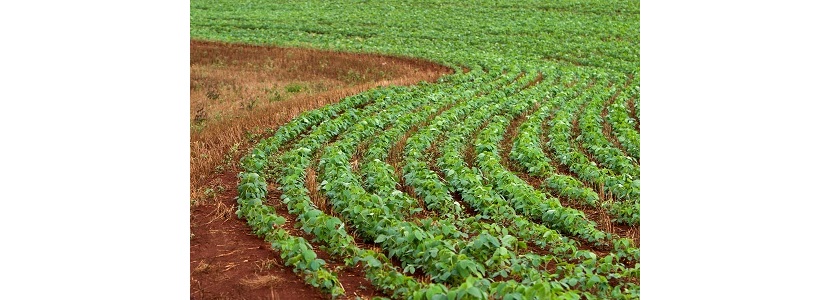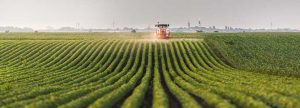 02 Jun 2022
02 Jun 2022
Cropland relocation could offer potential benefits to reduce environmental impacts cause by food production. Agricultural production has replaced natural ecosystems across the planet, becoming a major driver of carbon emissions, biodiversity loss, and freshwater consumption. The conversion of nearly half of the world’s ice-free land area to agricultural areas has contributed to three of humanity’s most pressing environmental challenges:
Despite current dietary changes in society with sustainability in mind, rising global demands for animal products reduce hopes of decreasing the environmental footprints of food production in the near future. A growing human population and increased consumption threatens to offset promising practices and developments like: technological advancements, genetically enhanced crop varieties and yield increases through the use of more resource efficient practices.
![]()
Under this scenario, ecosystem restoration has been identified as a key strategy to achieve large-scale carbon sequestration and reduce pressure on the earth’s biodiversity. In fact, it has been noted that when agriculturally degraded areas are allowed to regenerate carbon stocks and biodiversity lost due to land conversion can often rapidly return to pre-disturbance levels. Nonetheless, for agricultural lands to be restored without altering current food production levels, production would have to be intensified or spatially translocated and expanded.
Previous studies have identified priority areas for ecological restoration; however, it is still not very clear how agricultural production should be redistributed in order to achieve long-term environmental benefits without compromising food security.
Relocating agricultural areas (croplands) does not only represent an environmental opportunity, but may become necessary to maintain global food security. Taking into consideration that changing precipitation and snowmelt patterns threaten crop water supply. At the same time shifting temperature regimes across the world are reducing productivity dramatically in many different regions.

Study
The following study aimed to approach and determine the optimal distributions of global croplands in order to minimize biodiversity loss and carbon footprint. This was done through the use of global maps of the current growing areas of 25 major crops which account for 77% of the world’s current croplands. Each crop we assessed by analyzing carbon impact associated with cultivation in an area as the difference between natural and crop-specific local carbon stocks in vegetation and soils. Biodiversity impacts were estimated as the difference between local biodiversity under natural vegetation and under cropland. Using potential yield estimates for three alternative management scenarios, representing the range from traditional, subsistence-based organic farming systems to advanced, fully mechanized production with high-yielding crop varieties and optimum fertilizer and pesticide application. All estimates were derived assuming only rainfed water supply. Therefore, any configuration of croplands based on them represents a scenario in which no systematic irrigation is required.

Discussion
A complete global relocation of croplands is probably too extreme within the current scenario. However, a more conservative approach of redistributing croplands within national borders could still have significant benefits. Reducing biodiversity impact by 77% from its present state, and global carbon impact by 59%.
An even more realistic option is that of relocating the worst-offending 25% of croplands at national levels. This would still represent half of the benefits which could be obtained if in an ideal scenario all croplands were relocated.
The study showed that regardless of how climate might change, optimal distribution of croplands will change very little until the end of the century. In regards to this, senior report author Professor Andrea Manica said:
“Optimal cropping locations are no moving target. Areas where environmental footprints would be low and crop yields high, for the current climate will largely remain optimal in the future.”
Researchers highlighted the fact that despite certain complications, schemes were farmers are given incentives to retire part of their land for environmental benefits and financial rewards for producers could prove very beneficial.

Conclusions
Spatial translocation of agricultural production has great potential for reducing environmental impacts caused by food production worldwide.
Cropland relocation does not need to be implemented solely at large scales in order for it to have significant impacts. Due to the fact that even a redistribution of small production parts within reduced spatial scales can have considerable positive effects.
Although political and socio-economic challenges are undeniable when thinking of implementing cropland relocation, an array of proven policy measures for facilitating the process in a sustainable manner already exist. The implementation of such policies is crucial to achieving the relocation of agricultural areas with the positive environmental gains that are desperately needed. This is of utmost importance, if humankind has any hope on reversing the ongoing degradation of climate, biodiversity, and water associated with global food demands.
Extract from: “Relocating croplands could drastically reduce the environmental impacts of global food production.”Beyer, R.M., Hua, F., Martin, P.A. et al. (Continue reading: https://www.nature.com/articles/)
Subscribe now to the technical magazine of animal nutrition
AUTHORS

Nutritional Interventions to Improve Fertility in Male Broiler Breeders
Edgar Oviedo
The Use of Organic Acids in Poultry: A Natural Path to Health and Productivity
M. Naeem
Synergistic Benefits of Prebiotics and Probiotics in Poultry, Swine, and Cattle
Gustavo Adolfo Quintana-Ospina
Hybrid Rye Potential in Laying Hen Feed Rations
Gwendolyn Jones
A day in the life of phosphorus in pigs: Part I
Rafael Duran Giménez-Rico
Use of enzymes in diets for ruminants
Braulio de la Calle Campos
Minerals and Hoof Health in the Pregnant Sow
Juan Gabriel Espino
Impact of Oxidized Fats on Swine Reproduction and Offspring
Maria Alejandra Perez Alvarado